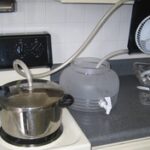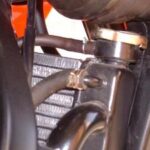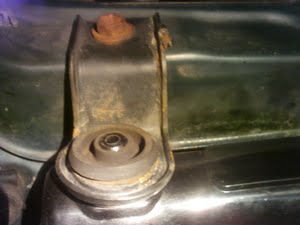Many people become a little skiddish when it comes to doing routine maintenance on their vehicles. They would much rather take it into their local auto shop and have the mechanics charge an arm, leg, and possibly three toes to do easy work. Don’t get me wrong, you should take your car into a mechanic for a regular tune-up or if anything seems wrong with your car, don’t hesitate to find out what it is. However, you can save yourself some money by doing some maintenance yourself.
I’m the type of person that enjoys working on things with their hands. I want to know what’s going on with my car. (Which some people find odd since I am a young woman.) I have shelled out enough money to mechanics over the past few years to learn that some things that need to be done to my car, I can do myself! The amazing thing is though, you can too!
One example of some routine maintenance that you can do yourself is flushing your radiator. The radiator holds a mixture of water and antifreeze that is the engine’s coolant system. Without a radiator, your car would overheat. It is located towards the front of your car under the hood. There should be a cap that can be unscrewed.
Just a few hints when it comes to flushing out your radiator. Antifreeze is highly toxic. It has a sweet odor to it and can attract animals as well as small children. Make sure to use a catch pan when draining out the old antifreeze and the rinse water. You can put the old liquids in seal able containers and take them down to an auto repair shop and they will dispose of it for you. Also, if you are not on a septic system, it is fairly safe to dump the old antifreeze down the toilet. Make sure you flush frequently however. Most water treatment plants are able to handle the treatment of such water.
Now before doing anything else to your vehicle, make sure the engine is cool. If the engine is hot, it will build up pressure. If you choose to remove the radiator cap while the pressure is high, you will be showered with a mixture of scalding hot water and antifreeze.
Put your catch pan underneath your car towards the front end. On the bottom part of your radiator, there should be a little plug. Remove that plug and allow the old antifreeze to drain into the pan. Pay attention to the coolant as it exits the vehicle. Make sure there are not metal flakes or odd materials. If there are, you should take your vehicle in because this is a bad thing! You can speed up the draining by taking off the radiator cap.
After removing all of the old coolant, make sure to dispose of it properly. It is also recommended to remove the old antifreeze from the reservoir. Replace the plug to the bottom of the radiator. Fill the system back up with water, replace the radiator cap, and turn on the engine. Allow your car to run for approximately 10 or 15 minutes. This allows the remaining coolant in the engine to be diluted down. Repeat the draining process to get the water out.
Once the system is empty once again, replace the plug and fill with water again. This next step may require more than one person to complete. Start up the car. Unplug the radiator and fill more water in the radiator at the same rate as the water is leaving the radiator down below. Do this until you feel that the water draining from the radiator is clear enough. Once you have reached this point, go ahead and shut off the car. Allow the rest of the water to drain from the system. When this is complete you can now put the plug back on the radiator for the last time.
When putting new coolant into your radiator, you need to mix it beforehand with water. Check your owner’s manual to be sure the correct mixture is used. Many recommend a 50/50 mixture. This means that you should mix 50% water and 50% antifreeze. You should do the mixing in a different container than what you have already used. By doing so, you can be sure that you are mixing correctly. You can use a funnel to help pour the mixture into your radiator. Fill until the liquid reached the bottom of the full mark on the radiator. Start your engine with the radiator cap still off. This will allow the new liquid to circulate through the system as well as get out any air bubbles that may have entered during the draining process. You can feel free to add more of the new mixture as needed while the car is running. When you don’t think you can add any more into the radiator, replace the cap and turn off your car. You have successfully flushed your radiator!
Just one more quick note before I leave you with your satisfactory smiling. After the first and maybe second drives in your vehicle, check the radiator after the engine has cooled. You want to do this to make sure that all marks should be at full marks. Also, if your reservoir is low, make sure to add the coolant to that as well.







